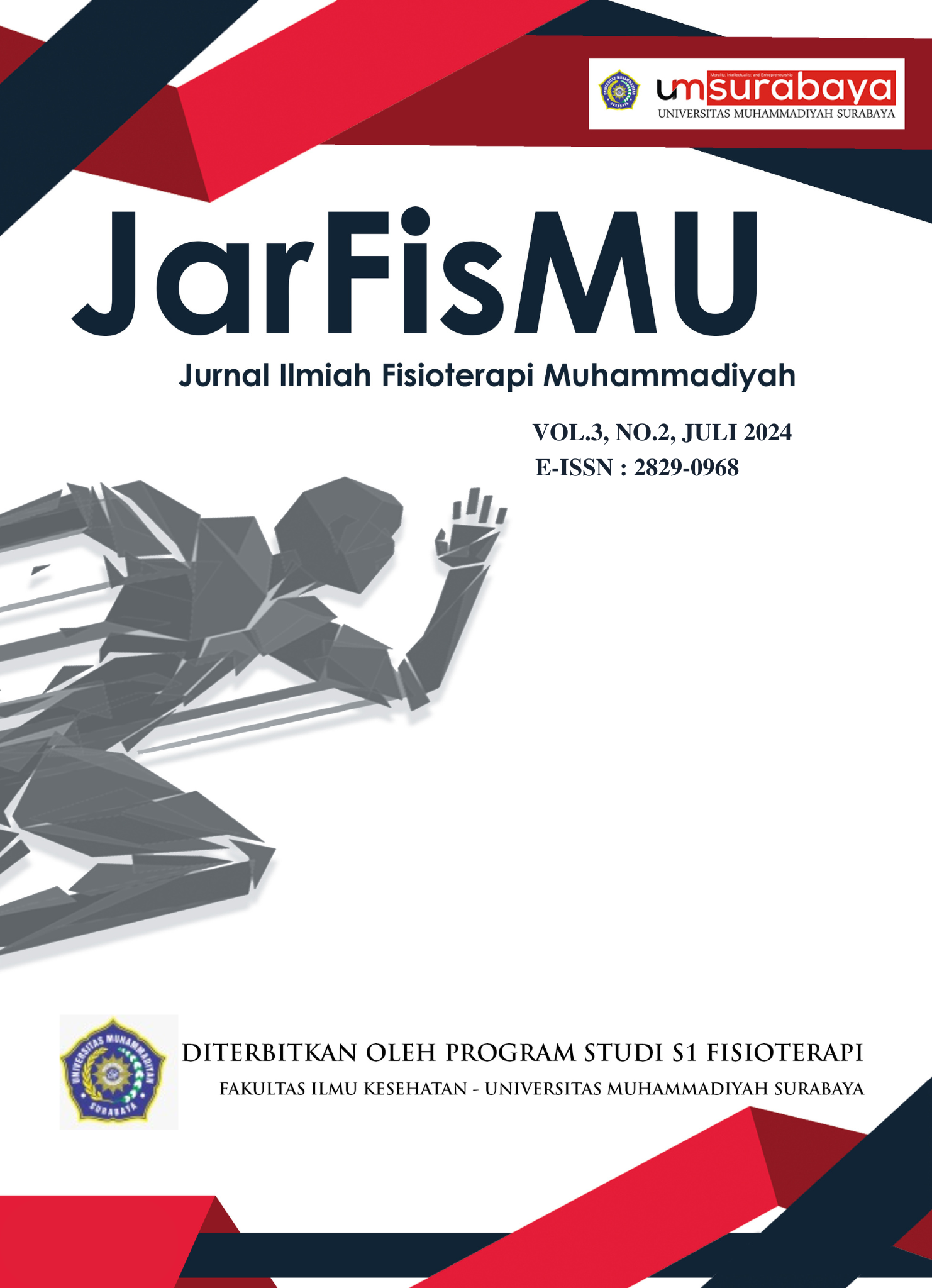THE EFFECT OF BODY MASS INDEX ON SCOLIOSIS IN CHILDREN AGE 4-6 YEARS IN THE KARTASURA REGION
Abstrak
Background: Scoliosis is an S or C-shaped spinal deformity that can occur in early childhood. The prevalence of scoliosis in the world reaches 4.5%. The occurrence of scoliosis can be caused by various risk factors, one of which is body mass index. Body mass index is a measurement to identify nutritional status by measuring body weight and height. Objective: To obtain sources of information regarding the influence of body mass index on scoliosis in children aged 4-6 years. Method: This research uses a quantitative observational analytical research design with a causal relationship research approach. The sample population was 583 children. The sampling technique used probability sampling, namely proportional random sampling and a research sample of 86 children was obtained based on inclusion, exclusion and dropout criteria. Body mass index measurement identifies criteria based on age and gender with a Z-score. Scoliosis measurement using a scoliometer. Results: The binary logistic regression test stated that there was a significant influence between body mass index on scoliosis with a p-value of 0.047 (p<0.05). Conclusion: It can be concluded that there is a significant influence of body mass index on scoliosis in children aged 4-6 years with a role of 8.3% in increasing the scoliosis curve.
Artikel teks lengkap
Penulis
Hak Cipta (c) 2024 Adnan Faris Naufal, Laili Rahmawati Azizi

Artikel ini berlisensiCreative Commons Attribution-ShareAlike 4.0 International License.
Penulis tetap memegang hak atas karyanya dan memberikan hak publikasi pertama kepada jurnal ini yang secara simultan karya tersebut dilisensikan di bawah: Creative Commons Attribution-ShareAlike 4.0 International (CC BY-SA 4.0)
